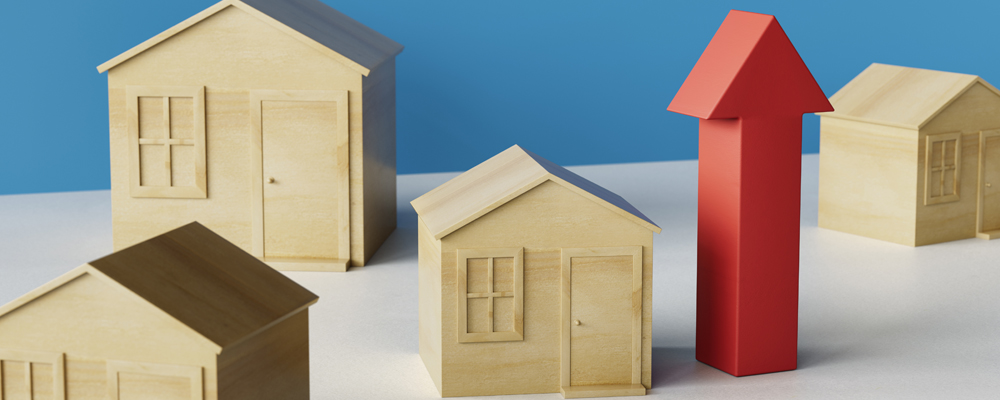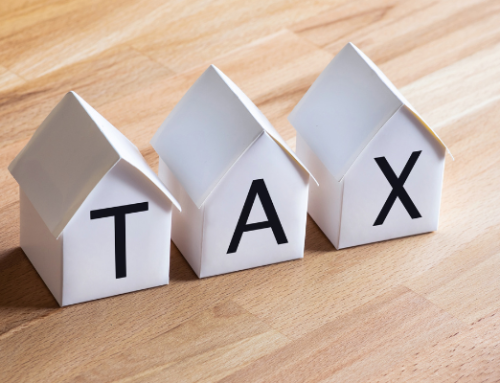Nationwide, it’s estimated that only 36 percent of renters who need affordable housing have access to it. The affordable housing crisis has been building for decades and was worsened by COVID-19. Now, as the U.S. battles inflation and a possible recession, uncertain is the best possible outcome. Every state is affected.
How Did We Get Here?
The cost to keep a roof over one’s head is the highest it’s been in decades. It’s a complicated issue involving several factors.
Lack of supply: there simply aren’t enough homes for the people willing and able to buy them. Many point to the Great Recession, where new home construction halted. The housing market has recovered since then, but the lack of supply today is still a byproduct of the recession years. The U.S. is currently short about 3.8 million units as of 2021.
And of the existing homes, fewer are for sale. At the beginning of fall, nationwide home sales were trending almost 20 percent lower than the year before. Since last year, the number of homes for sale, median listing price, and change in sales are all down between 11 and 30 percent.
Finally, existing homeowners aren’t leaving. Where the market would typically expect first-time homeowners to upgrade and sell their ‘starter’ home, those homeowners are staying where they are.
Vacancy rates are at all-time lows, and the number of homeowners jumped in 2020. There’s a higher demand for housing and less supply.
Higher costs: Yet, a growing number of potential home buyers are still priced out of the market. There are higher costs for both consumers and developers. Consumers are faced with more expensive mortgages, higher home prices, and a higher cost of living. In most cases, income won’t rise to the level of inflation, so consumers are forced to do more with less, or to simply do without.
Affordable housing is also harder to come by because developers are dealing with higher costs and interest rates themselves while waiting for local or regional regulatory approvals. The longer a project goes on, the harder it becomes for general and subcontractors to maintain pricing levels. In turn, that can make financing harder. The resulting uncertainty means more risk for a project that may already depend on government funding.
Higher demand: At its peak, the pandemic housing market saw a high number of mortgage applications, more home sales, higher prices, and a frenzied pace, with homes often staying on the market for mere days or even hours. That pace has slowed, but there is still uneven supply and demand.
Affordable Housing in Virginia
The outlook isn’t much better in Virginia. Long-term affordability is in question following low inventory, high prices, and slower sales. Residential housing in Northern Virginia is worst, where home prices increased more between 2000 and 2019 than anywhere else on the East Coast. Parts of Southern Virginia also experienced a 32 percent increase in home prices over the last four years.
Experts say the situation is the result of an ongoing imbalance in supply and demand.
More homebuyers are bowing out of the market altogether, leading to higher disparities in home ownership and a strain on regional and statewide economic growth. Virginia’s national business climate ranking already fell from first to third place, and its rating for Economy earned an overall grade of C+; both metrics are concerning for policymakers long-term.
Amid a lack of affordable homes, the rent market is growing.
The Rental Market
And more apartments are needed – about 4.3 million over the next 13 years. That’s just to meet projected demand.
As potential first-time home buyers are forced out of the housing market, multi-family rental properties are more in-demand. The populations driving this trend are mostly recent college graduates, immigrants, and other young people just moving out from home and looking to room with friends in a more affordable situation than living alone.
But two of the biggest factors in rental demand are hard to pinpoint: inflation and homeownership rates. Considering that housing accounts for one-third of inflation, it’s a tricky calculation. For example, if the above scenario is flipped and there is low immigration, continued inflation, and high homeownership rates, the projected demand for the rental market would be cut in half.
And though rent prices are climbing and will end the year higher than 2021, the growth is expected to slow down over the next several months. This is echoing a similar trend as affordable single-family housing: people are getting priced out of renting new apartments. As the cost of rent has exceeded many peoples’ incomes, they’re opting instead to stay with more roommates or delay moving out of their parents’ house.
Potential Solutions
In cities around the country, developers, policymakers, and residents are grappling with different solutions to the same problem: the affordable housing crisis.
One possible solution is single-room occupancy (SRO). SROs, which are effectively high-efficiency, one-room studio apartments, were popular decades ago, but in the age of tiny homes, sustainability, and affordability, SROs could help to meet the needs of single and two-person residents in larger cities especially. Success stories from New York, Portland, and Chicago range from helping low-income renters get stable footing to repurposing hotels for individuals in transition. There are still several policy and regulatory obstacles to clear before SROs are a more serious part of the affordable housing conversation nationwide.
Another potential solution would incentivize and simplify regional affordable housing. The federal government has been exploring ways to bolster inclusionary zoning to make affordable housing projects easier to build. That involves changing local land use and zoning laws. The National Association of Homebuilders reports that multifamily developers can attribute about 40 percent of the total development costs to government regulations.
There’s also the option for more public-private partnerships. In cities where public-private partnerships work together well, there’s often a regional contractor who partners with local nonprofits. In that way, both parties understand the nuances of a particular area’s housing needs.
The tax incentives in the Inflation Reduction Act should help. In addition to prevailing wage bonus amounts for energy-efficient construction and retrofits, there are added tax breaks for projects helping low-income communities.
In June 2022, Fed Chairman Jerome Powell commented that the U.S. housing market would need to reset. Since that announcement, home prices have started to fall; in the Virginia Beach regional area, home prices are down just over one percent from their peak. However, Moody’s predicts that the most overvalued housing markets will see corrections ranging from five to ten percent or more if there’s a recession.
Affordable housing is a nationwide concern and one that developers, property owners, investors, and consumers will feel the effects of. Projections vary depending on the source. Real estate stakeholders must stay vigilant and be ready to make data-informed decisions. The construction and real estate advisors at PBMares can help.





